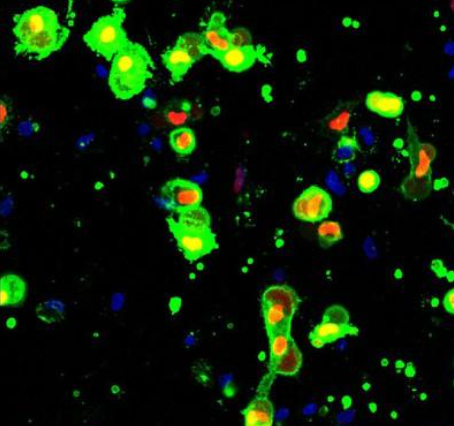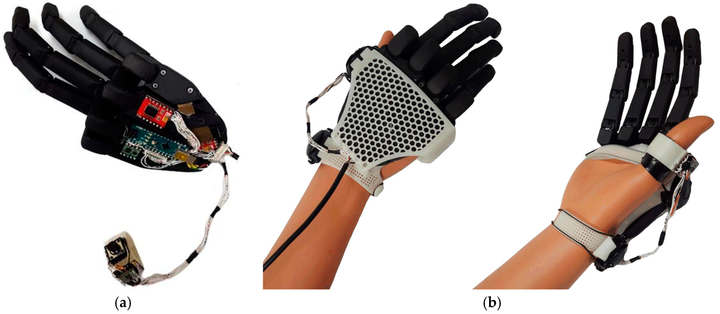A look at how our experiences leave a biological imprint on our genes, possibly influencing how calmly (or chaotically) we deal with adversity
By Candice Savary
Between Nature and Nurture
Wouldn’t it be nice to actually take everyone’s advice and just not stress? Indeed, we all know that one person who never seems to flinch, even when the world feels like the most stressful place imaginable. In answering why it is that some individuals seem naturally better equipped to manage stress than others, scientists have looked to examine the individual differences in stress responses.
When tasked with understanding why people differ, two main explanations usually surface: they were born that way (genes), or their environment shaped them that way (environment). As usual with psychological explanations, the nature vs nurture argument arises. There’s also a field for this; Behavioural Genetics does an exceptional job of identifying how much of the differences between individuals on certain traits are due to their genes (heritability) or their environment.
However, this distinction could start to blur once we look at how genes are expressed across different contexts. Genes code for lots of things, eye colour, blood type, the cells in our lungs. Yet every cell contains the same DNA, and only certain genes are actively expressed in each. During development, signaling pathways switch genes on or off, guiding cells to form specific tissues, so no lung cells where photoreceptors should be. Pretty neat. As we shall see, this is not the only way gene expression may be regulated.
Epigenetics is the study of how environmental factors can influence the expression of our genes without changing the underlying DNA sequence. The term ‘epigenetics’ comes from the Greek word ‘epi’, which means over or above. This reflects how epigenetic changes act on top of or alongside our genetic code, regulating when and how genes are turned ‘on’ or ‘off’ (expressed or not expressed). Epigeneticists have reformed the views of nature and nurture by elegantly revealing the intertwining reality of nature influencing nurture through biology. This has alleviated the grips of a ‘deterministic’ genome but rather a dynamic epigenome, malleable by experience.
The epigenetics and psychology combo works particularly well once we understand that biology has a lot to do with how we act and feel. Neurotransmitters like serotonin and dopamine regulate mood and behaviour. Elevated cortisol can heighten anxiety and shape social interactions, while a more reactive amygdala drives stronger emotional responses and impulsivity. In essence, neuroscience helps us unpack behaviour through the brain’s biological and chemical processes. If biology may underpin some types of behaviour…and of course genes underpin biology…and our environment can regulate gene expression, we could look at how our environment may shape the way our genes are expressed in our phenotype and how this affects behaviour.
Before I can continue, I’m obliged to highlight the illegal term in behavioural genetics: ‘a gene for’. There is very very rarely (not really ever) ever a gene for a behavioural trait. It’s usually more like; this gene makes you a bit more likely to have this tendency and if you inherit it along with this other gene, you’re even more predisposed to that tendency and about thirty textbook pages and lots of gene associations later, this might explain why you freak out more than the next person when you have an essay due. Regrettably, this is much less compelling than presenting you with a stress gene, but hopefully this piece will allude to something interesting about predispositions to stress. So, while our biology may nudge us toward certain behaviours, it doesn’t decide them but makes them more likely.
By examining how environmental factors regulate behaviour-related genes, we may gain insight into individual differences in stress responses. Here, I build a case for the role of epigenetics in explaining these differences.
A Tale of Adversity
Responding to our environment can mean lots of different things. On a behavioural level, it could mean altering our actions based on the stimuli we encounter, a process that generally serves us well; run when there’s a lion, hunt when we are hungry, the whole song and dance. But our biology can too be moulded to better suit our environment; in accordance with the conditions we face. This is the reason for our survival most of the time until, a first caveat: problems arise when there’s a mismatch between the environment we’re biologically prepared for and the one we actually live in. Take a developing fetus: if a mother faces scarcity and malnutrition, her body, through chemical signalling, alerts the fetus to prepare for a harsh world. The fetus adapts, developing mechanisms to hold onto glucose, slowing metabolism and fine-tuning the hypothalamus to cling to every calorie. This is wonderfully useful if the child is indeed born into a world of scarcity, but terribly damaging if they instead enter one where food is abundant and calories are everywhere. In effect, responses that were once adaptive now increase the risk of obesity and metabolic disease.
This was the fate of many babies during the Dutch Winter Famine of 1944, one of the first clear examples of epigenetics in action. Pregnant mothers, deprived of food during pregnancy but not at the point of birth, gave birth to children who later showed higher expression of the insulin-like growth factor gene (IGF2) due to reduced DNA methylation (a type of epigenetic modification) (Heijmans et al., 2008). In adapting to hold on to every nutrient in anticipation of scarcity, these children became more susceptible to obesity and metabolic disease in a world where food was, in fact, plentiful. More to our interest, despite the mothers’ genes being unchanged, their children carried the genetic signature of famine. It seems that even before birth, we can evaluate environmental cues and adjust gene expression accordingly, an evolutionary bet if you will, on the kind of world we expects to face.
The story of the Dutch Hunger Winter highlights two key insights: first, our experiences can directly shape gene regulation, meaning we may not express the same genes our parents do; second, these regulatory changes can be passed on, showing that environmental influences on biology can begin long before birth. As the notion grows that some of our predispositions to certain behaviors may be biological, it becomes intriguing to understand how our environment has had a role in shaping us into who we are. Epigenetics propose a biological foundation as to how our experiences translate into enduring changes in our biology and potentially, our tendencies to stress.
Stress and Epigenetics
Stress is especially interesting because it is a good example of a biological tactic, which used to be incredibly advantageous, is now less so as our environments have changed.
The stress response is designed for intermittent use, to help us run from the usual saber-tooth tiger or summon the strength to fight off an opponent, and this is really useful. Right but, tigers run-ins are a lot less usually these days as you may have noticed and physically running and/or fighting is lower on our lists of survival skills, instead we experience more prolonged stress. Unfortunately for us, when stress response is constantly activated for things that aren’t running from a predator, it results in persistently elevated cortisol levels with widespread negative effects. Imagine your heart pounding and muscles tensing through your entire 9-to-5 as if in moments of real threat. Such chronic activation, grants results like stomach ulcers and increased vulnerability to disease - less useful. More central is chronic stress, particularly in environments of consistent adversity such as childhood maltreatment, which places an epigenetic burden on our cells. This may explain why some individuals develop a heightened sensitivity to stress, carrying a biological weight long after the threat is gone.
One of the most impactful studies in this field examined the effects of maternal care on infant development. In the rodent world, one of the most crucial maternal behaviors is licking and grooming (LG) -a caregiving behavior observed in rat mothers toward their pups. In Liu et al.’s (1997) study, the absence of this maternal care led to rats that were more fearful, displayed heightened stress responses to novelty, and engaged in fewer exploratory behaviors. These neglected rats coped with stress far less efficiently than their well-nurtured counterparts. More importantly this stress vulnerability persisted throughout their lives, hinting at a deeper more complex biological mechanism, one that epigenetics could explain.
Remarkably this experiment fluently uncovered parts of the epigenetic mechanisms that predispose these behaviors. The neglected rat group exhibited methylation of the Nr3c1 exon 1, a promoter for NGF1-A, a gene critical for driving the expression of glucocorticoid receptors (GRs) in the brain. GRs play a pivotal role in inhibiting the stress response by suppressing the release of CRH (corticotropin-releasing hormone) and ACTH (adrenocorticotropic hormone) through a negative feedback loop. However, the addition of methyl groups suppressed the expression of NGF1-A, effectively “closing” the DNA to transcription and making this DNA strand less accessible. As a result, these rats developed fewer glucocorticoid receptors, impairing their ability to regulate their stress response. To highlight the potential of epigenetic inheritance for the stress response regulation, even the next generation of non-neglected pups exhibited behavioral and genetic patterns similar to their neglected parents.
We now see the potential for the postnatal environment in directly shaping the genome of a developing rat. Even more interesting, the case is thought to be the same in humans too. Rather obviously we cannot test in a lab the epigenetic consequences for stress induction however, research on adults who experienced severe childhood trauma has revealed strikingly similar correlations between glucocorticoid receptor methylation and heightened stress reactivity (McGowan et al., 2009). Underscored clearly is the intricate interplay between early life experiences and gene expression related to stress, creating an epigenetic signature that may persist across generations.
Since scientists do quite well detailing abstract behaviours with little molecules, one might wonder: how exactly does environmental stimuli translate into biochemical changes in our bodies that subsequently silence genes? The short answer is that we don’t fully understand the mechanisms yet, although various candidate pathways exist that propose how environmental stimuli can be converted into biochemical cascades, much of the research remains correlational. We observe that certain experiences coincide with gene alterations and find mechanisms for those alterations, yet we cannot always map the complete molecular sequence that drives these changes from external straight to internal. Understanding these causal pathways through a biological lens remains a compelling focus within the field of preventative epigenetics.
Concluding Thoughts
Epigenetics has done a remarkable job of revealing how our experiences may mark us on a biological level. The once-clear line between nature and nurture has become a little more blurred. By understanding that behaviour can be influenced by a series of chemicals triggered by the environment, we recognise that our response may be shaped by our unique biological makeup, potentially influenced dually by the biology we inherited and life experiences. This perspective shifts us a little away from the notion of a genetically stable phenotype.
Of course, more formalities and disclaimers follow any discussion on epigenetics and behaviour. As fascinating as this field is, epigenetics is not to our disappointment, the grand explanation for individual differences. In reality most reported human epigenetic effects are small, unstable and correlational rather than causal. Epigenetics should not be viewed as the environment rewriting our genes, but rather as an interesting biological mechanism through which the environment may affect us, and as a quite convincing mechanistic explanation for this phenomenon. More importantly, just because somewhere along the road something got methylated, this does not mean you’re destined to worry and stress as a victim of your genes. Instead, recent research demonstrated that your epigenome regarding behaviour may be dynamic not only in early experiences but throughout your lifespan.
In any case, epigenetics appears to make a compelling case for how our environment literally gets under our skin.
REFERENCES
Antonucci, T. C., Vandewater, E. A., & Lansford, J. E. (2006). Social networks in adult life and a preliminary examination of the convoy model. The Journals of Gerontology Series B: Psychological Sciences and Social Sciences, 56(1), S75–S78.Heijmans, B. T., Tobi, E. W., Stein, A. D., Putter, H., Blauw, G. J., Susser, E. S., Slagboom, P. E., & Lumey, L. H. (2008). Persistent epigenetic differences associated with prenatal exposure to famine in humans. Proceedings of the National Academy of Sciences, 105(44), 17046–17049. https://doi.org/10.1073/pnas.0806560105Liu, D., Diorio, J., Day, J. C., Francis, D. D., & Meaney, M. J. (1997). Maternal care, hippocampal synaptogenesis and cognitive development in rats. Nature Neuroscience, 3(8), 799–806.McGowan, P. O., Sasaki, A., D’Alessio, A. C., Dymov, S., Labonté, B., Szyf, M., Turecki, G., & Meaney, M. J. (2009). Epigenetic regulation of the glucocorticoid receptor in human brain associates with childhood abuse. Nature Neuroscience, 12(3), 342–348.





